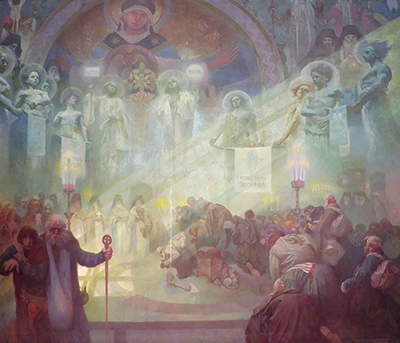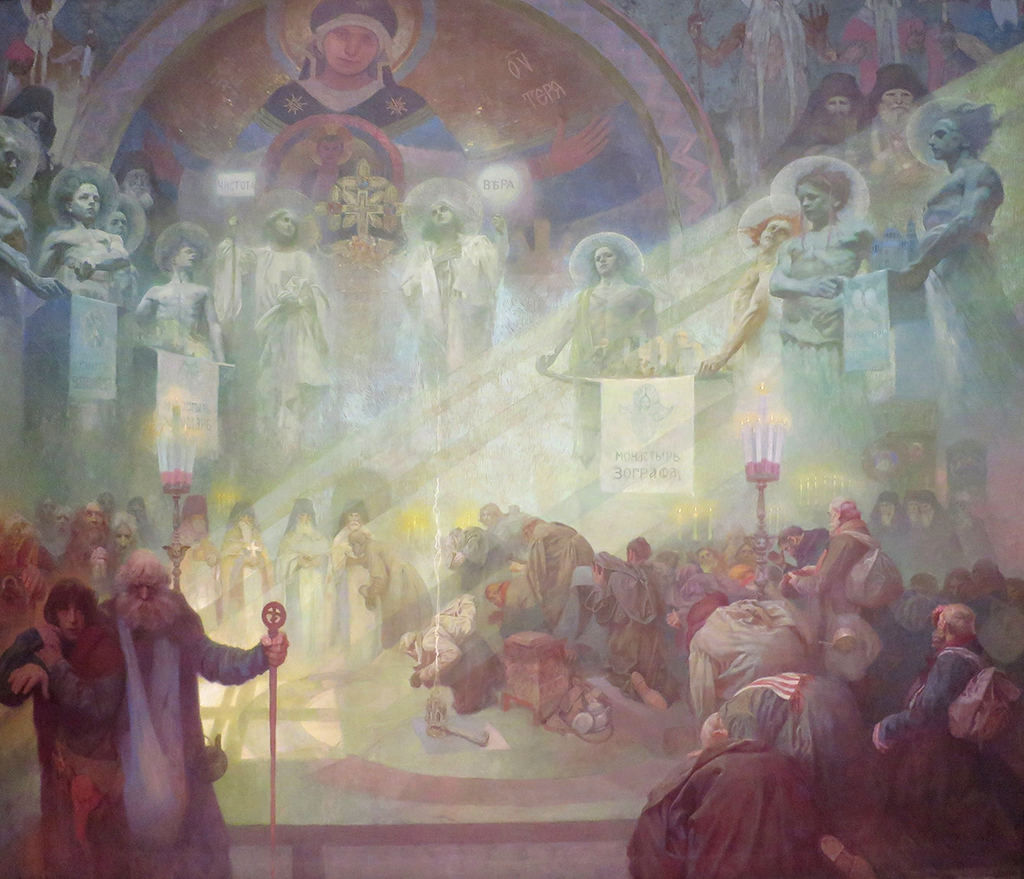 Buy Art Prints Now
Buy Art Prints Nowfrom Amazon
* As an Amazon Associate, and partner with Google Adsense and Ezoic, I earn from qualifying purchases.
This painting is the seventeenth of twenty from the Slav Epic series in which artist Alphonse Mucha attempted to teach the world about this history of his people, the Slavs. It would take him close to two decades to finally complete this huge undertaking, leaving behind an iconic body of work.
Holy Mount Athos brings together many of the themes and styles found right throughout the series, with the balance between spirit and body divided into two parts of the composition. He worked on this item in 1926, and it was to be one of the smaller canvases in the series, though still relatively large at over four metres in width and height. He continued to make use of egg tempera as the main medium, just as he had done so on the previous installments in this series. His decision to work on canvases rather than plaster walls which members of the Italian Renaissance would have done has meant that these fine creations can be displayed in different ways, and even moved to new venues if necessary. This has also helped in their preservation, where installed items in Italy have been much harder to protect in the centuries since they were put together.
Holy Mount Athos hosted a monastery which Mucha would visit in 1924. He was immediately struck by its beauty and also felt a spiritual atmosphere within this location. It helped connect him to past centuries, just as his earlier paintings had done and so he decided to add this into one of his upcoming artworks. Here he creates this feeling of spirituality by separating figures into two parts of the painting, with those below bowing to the angels above. Mucha would often have an overall message such as this, and then add certain figures within the scene which have their own relevance. In this case, for example, we find an old man, blind, being helped along by a much younger boy. This is to give the impression of good morality being passed on through the influence of the monastery. For some, Holy Mount Athos is their favourite item from the entire series, with stunning detail and a brighter, more uplifting palette.
By the time he completed Holy Mount Athos in 1926, Alphonse Mucha was starting to approach the end of his work on the Slav Epic. He had put his heart and soul into a project which he had initially planned many decades ago, but was unable to commence this ambitious series until he received the necessary funding. It is remarkable that he managed to achieve such a consistent look throughout the series of paintings, sticking to the same egg tempera throughout and avoiding any divergence from his initial plan as the years unfolded. The Slav Epic has become the most important collection of art in Czech history and efforts have been made recently to allow as many people to see these artworks in person and to continue to spread knowledge around the history of the slavic people.




